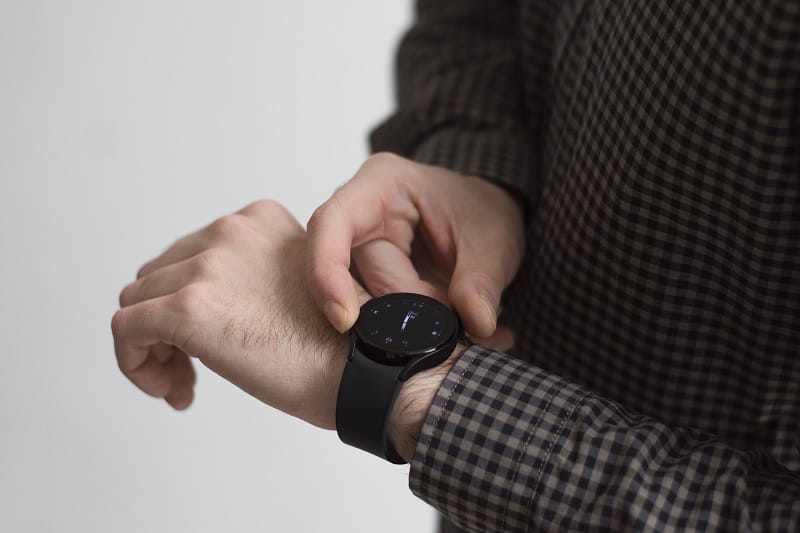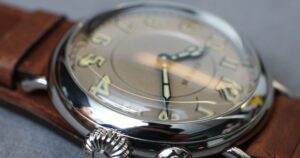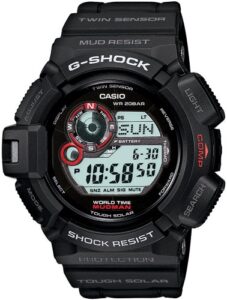Every owner of a luxury watch will understand the dread of accidentally dropping or banging it. But what about habits that you didn’t even know were damaging to your watch? Here are 11 things you may be doing that will unintentionally ruin your beloved timepiece.

1. Storing Your Watch in a Humid Environment
Most watch owners know that moisture and watches shouldn’t mix. It will cause the movement to corrode and rust and the lubricating oils to thicken and gum up the gears.
But have you ever considered the damage humidity will do to your watch’s box and papers? You should keep these and the watch in perfect condition if you ever plan on reselling it. Make sure that your watch’s storage area is temperature-controlled. You can add some silica gel or uncooked rice to the area to absorb any moisture. Otherwise, you’ll see a snowball effect of damage to your watch that will result in a costly watch repair.
2. Exposing Your Watch to Rapid or Extreme Temperature Changes
When you expose your watch to a quick change in temperature, the rubber seals can compress and expand too quickly. This will cause your watch to lose its water resistance.
Here are two temperature-related situations you may not have considered that can damage your watch. Have you ever gone straight from a pool to a hot tub (or vice versa) while wearing your waterproof watch? Or have you ever stored your watch in an attic?
Attics can reach up to 160ºF when the outside temperature is only 95º. If you live in a hot area, storing your watch in the attic can compromise the movements and gaskets in your watch. And make sure not to wear your watch in a pool to hot tub scenario, where you’ll be going from one end of the temperature spectrum to the other.
3. Storing Your Watch for Too Long Without Use
If you own a watch that you don’t wear very often, you shouldn’t store it for a year (or several years) at a time. The lubricants will dry out and harden up. To prevent this, take it out of storage every so often and give it a good wind to get the oil flowing again.
4. Winding Your Watch While Wearing It
Attempting to set the time or wind your watch while wearing it is a surefire way to cause damage. It will force you to pull the crown out at an upward angle, compromising many parts inside the watch. It can also bend the stem of the crown to the point where you won’t be able to wind it at all anymore. A good watchmaker can take care of this type of watch repair, but as they say, an ounce of prevention is worth a pound of cure.
5. Overwinding Your Watch
Overwinding your watch means you’re winding your mechanical watch past the point of feeling resistance. This will lead to stress on the gears and winding mechanism and will cause a premature breakdown of the parts. It can even cause one or more of the gears or part of the winding mechanism to snap, which will mean a very costly watch repair.
6. Turning the Hands on a Vintage Watch Backwards
If you’re setting the time on your vintage watch, don’t be tempted to wind it backward, even if it would be easier. Modern watches have a failsafe mechanism where winding it backward won’t damage the watch, but vintage watches don’t have this. You will damage the movement and cost yourself a pretty penny in repairs. No matter how inconsequential it may seem, to avoid having to bring your beautiful vintage Chopard watch for a repair, always wind the hands forward.
7. Resetting the Time in the Danger Zone
For watches that come with date complications, you should never try to change the time if the hour hand is between 9 p.m. and 3 a.m. This is the time when your watch has the date-changing mechanism engaged. You may feel resistance if you try to do this, and if you keep pushing, you’ll snap several components inside the watch and break the date wheel.
8. Resetting the Chronograph Function Incorrectly
This problem is very similar to changing the time during the danger zone. Some watches come with a chronograph, or stopwatch function. If you try resetting the chronograph when it’s already running, you could break several cogs and wheels inside the watch.
9. Pushing the Pushers Incorrectly
Pushers are found in watches with features like annual calendar complications. When using a pusher, make sure you push it in all the way before letting it out. Otherwise, the pusher can get stuck in the middle, causing it to stop advancing or even breaking the wheels.
10. Not Screwing the Crown Correctly
Whenever you reset the date or time on your watch, you should be screwing the crown completely back to the correct position. Leaving it slightly open will allow water and dirt to get inside the watch, and forcing it too much will damage the threading and gaskets.
You should also leave it completely screwed when storing your watch. Many watch owners think that unscrewing the crown when storing it will relieve pressure on the crown spring and movement. In reality, this will cause the watch to stop and leave the movement exposed to dust and debris.
11. Replacing Parts of Your Vintage Watch
This mistake comes with a caveat—replacing parts on your vintage watch won’t necessarily damage the watch itself, but it will damage the resale value of the timepiece. If you’re worried about keeping your vintage watch in good condition, check out our tips for protecting your watch.
Avoiding all of these bad habits will keep your watch ticking beautifully. Remember to also take your watch in for regular servicing every one to three years, as a trusted watchmaker can resolve any potential problems with your timepiece–including ones that you may not have noticed. Your watchmaker may also be able to identify a lousy watch habit that you didn’t even realize you were doing wrong!





